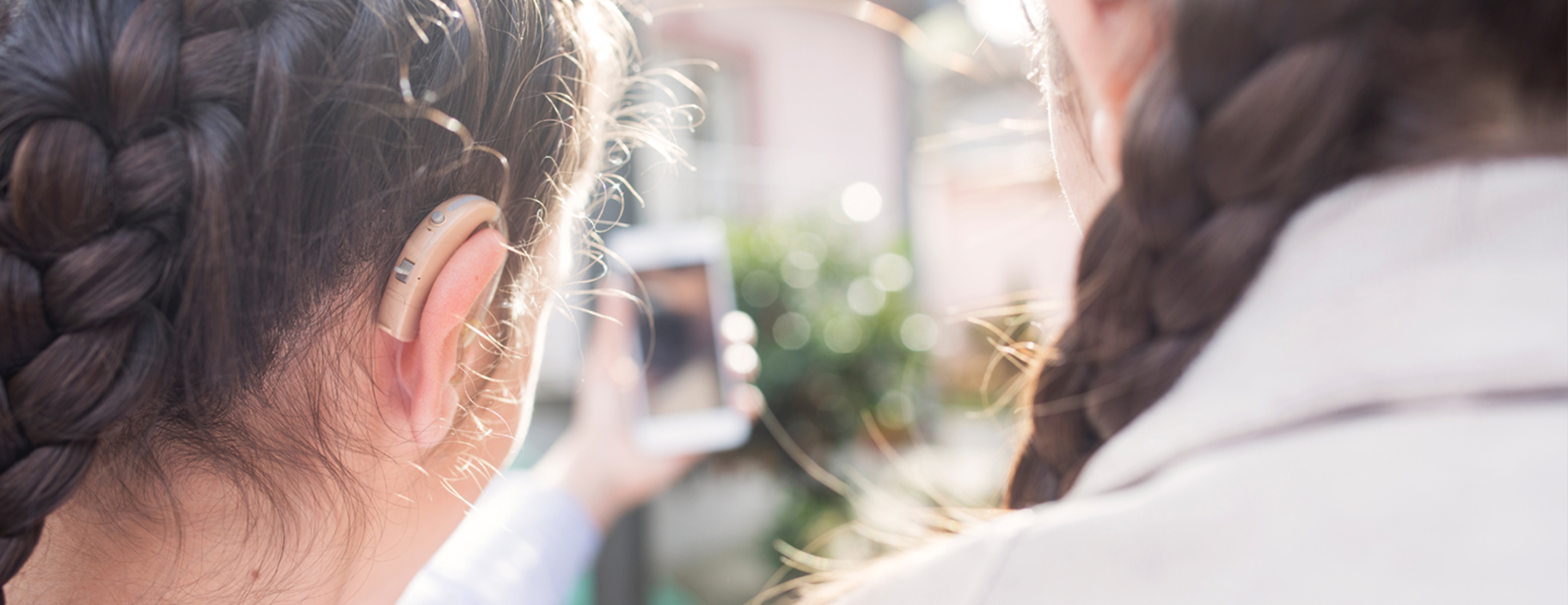
Cell Phones and Hearing Aids
A common complaint of hearing aid users is interference and difficulty using cell phones, particularly digital cell phones, with their hearing aids. The following strategies may help when using a cell phone with hearing aids.
Use the cell phone with your hearing aids in the regular "on" or "mic" position.
Hold the phone and talk as you normally would on the phone, or with the receiver slightly higher to the microphone, if you have a behind-the-ear hearing aid. If this does not work, try the other steps below.
It is important to note that "Flip" cell phone receivers are somewhat farther from the ear and the hearing aid than non-flip types. The increased distance between the hearing aid and the phone's antenna may reduce or eliminate the effects of acoustic feedback or other interference.
Not all phone models work well with hearing aids.
Most digital cell phones will create a buzzing static or interference if used with a hearing aid telecoil (T-coil). Check with your service provider regarding phone models that can be used with T-coils.
Consider using a neckloop.
At least three wireless phone manufacturers including Nokia, Motorola and Ericsson have developed neckloops that can be used with a T-coil. The neckloops permit hands-free use of the cell phone, and binaural (two ear) listening if the user has two hearing aids with T-coils. The phone itself can be carried in a pocket or clipped onto clothing.
The Nokia LPS1 Loopset is an example. A coated wire loop is worn around the neck. This loop then plugs into the bottom of the cell phone. The hearing aids are put in T-coil mode. The phone sends the information to the neck loop, which transmits the signal to your hearing aid. Call 1-888-NOKIA-2U for information, or visit the Nokia Web site at www.nokiausa.com.
Try a HATIS (Hearing Aid Telephone Interconnect System) hearing aid accessory.
A HATIS allows a direct connection between the cell phone and hearing aid T-coil. This device uses a separate earpiece and cord that plugs into your cell phone. Several styles are available. Some cell phone manufacturers have an accessory to adapt the HATIS to the phone. Call 1-877-U-HEAR-ME (toll free) or visit the HATIS Web site at www.hatis.com.
UCSF Health medical specialists have reviewed this information. It is for educational purposes only and is not intended to replace the advice of your doctor or other health care provider. We encourage you to discuss any questions or concerns you may have with your provider.







